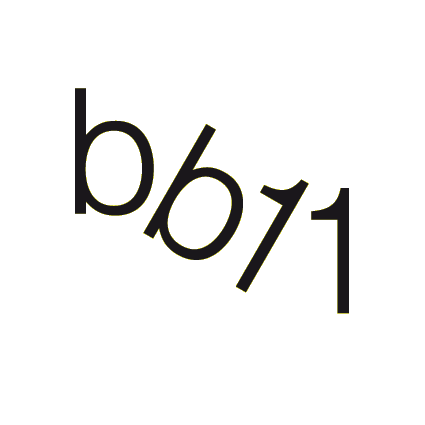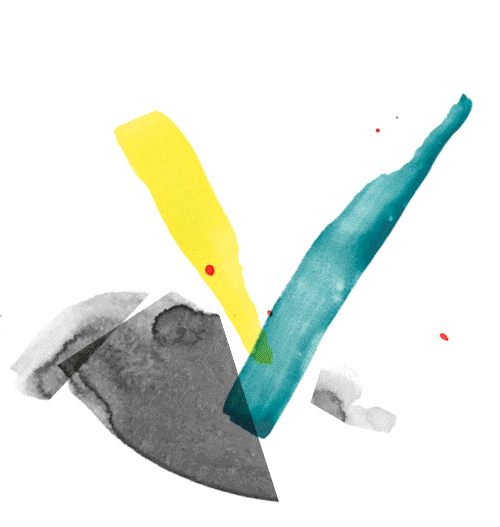

Sign up for our newsletters. You can change the settings or unsubscribe at any time.
Thank you for your subscription. We have sent you an e-mail with a confirmation link.


exp. 1
exp. 2
exp. 3

Edgar Calel (in collaboration with Fernando Pereira dos Santos)
Venues: KW Institute for Contemporary Art, daadgalerie, 11th Berlin Biennale c/o ExRotaprint
Edgar Calel (in collaboration with Fernando Pereira dos Santos)
Edgar Calel, born 1987 in Chi Xot, GT – lives and works in Chi Xot
Fernando Pereira dos Santos, born 1984 in São Paulo, BR – lives and works in São Paulo
Adopting as a starting point the cosmovisions of his Maya Kaqchikel people, Edgar Calel develops ancestral communication technologies using the language of contemporary art. The video Sueño de obsidiana [Obsidian Dream, 2020], made in collaboration with Fernando Pereira dos Santos, follows a ritual for the recognition of Indigenous land that Calel enacts inside one of the icons of Brazilian modernist architecture: the 1954 São Paulo Biennial Pavilion in Ibirapuera Park. Entering the void of this concrete body, Calel wears a jaguar pelt, his spirit animal in Mayan cosmology. As if participating in an ancestral procession, he also sings and shouts, calling for the feline spirit’s return to the territory. The tarp that he unfurls on the bannister of the structure’s curved ramp brings to the space the echo of the “kit, kit, kit” sound used by his grandmother to call the birds in her backyard. For Calel, this has become a chant for communicating with the elders and the spirits. Shown with the video, drawings from the series Ni Ch’itiloj Ri q’aq [Phonemes of Fire, 2020–ongoing] adopt diverse formats, styles, and languages, while combining representations of reality with dreams and ancestral divinities from the Guatemalan territory, such as the Rilaj Mam or Revered Grandfather. Traces of fire are evoked by the artist’s use of charcoal and graphite. In Calel’s words, “we all have a relationship to fire. We heat up our spirit and our food to free our words, our ideas, our walking.”
On display at daadgalerie, B’atz tejido constelación de saberes [B’atz Textile Constellation of Knowledges, 2015] is the blue sweater worn by Calel during the ritual. It is accompanied by two photographs of him wearing it in the middle of a corn plantation. The sweater is embroidered with the name of the twenty-three Indigenous languages that are spoken in the Guatemalan territory—knowledges that have helped the artist and his people resist the colonial onslaught.
Beatriz Lemos
El primer nueva corónica y buen gobierno
Felipe Guamán Poma de Ayala
Chronicle
Hatred Among Us
Lisette Lagnado
Essay
II: La Solidaridad va Más Allá de un Concepto. Entre las Curadoras de la XI Berlin Biennale
Lisette Lagnado, Agustín Pérez Rubio
Conversation
Being in Crisis together – Einander in Krisen begegnen
Feminist Health Care Research Group (Inga Zimprich/Julia Bonn)
Online workshop
Invitation to the Species: Cecilia Vicuña
Tamaas / Cecilia Vicuña
Podcast
Museo de la Solidaridad Salvador Allende (MSSA) in Berlin
A conversation between María Berríos and Melanie Roumiguière
Conversation
By using this website you agree to the use of cookies in accordance with our data privacy policy.

Edgar Calel (in collaboration with Fernando Pereira dos Santos)
Venues: KW Institute for Contemporary Art, daadgalerie, 11th Berlin Biennale c/o ExRotaprint
Edgar Calel (in collaboration with Fernando Pereira dos Santos)
Edgar Calel, born 1987 in Chi Xot, GT – lives and works in Chi Xot
Fernando Pereira dos Santos, born 1984 in São Paulo, BR – lives and works in São Paulo
Adopting as a starting point the cosmovisions of his Maya Kaqchikel people, Edgar Calel develops ancestral communication technologies using the language of contemporary art. The video Sueño de obsidiana [Obsidian Dream, 2020], made in collaboration with Fernando Pereira dos Santos, follows a ritual for the recognition of Indigenous land that Calel enacts inside one of the icons of Brazilian modernist architecture: the 1954 São Paulo Biennial Pavilion in Ibirapuera Park. Entering the void of this concrete body, Calel wears a jaguar pelt, his spirit animal in Mayan cosmology. As if participating in an ancestral procession, he also sings and shouts, calling for the feline spirit’s return to the territory. The tarp that he unfurls on the bannister of the structure’s curved ramp brings to the space the echo of the “kit, kit, kit” sound used by his grandmother to call the birds in her backyard. For Calel, this has become a chant for communicating with the elders and the spirits. Shown with the video, drawings from the series Ni Ch’itiloj Ri q’aq [Phonemes of Fire, 2020–ongoing] adopt diverse formats, styles, and languages, while combining representations of reality with dreams and ancestral divinities from the Guatemalan territory, such as the Rilaj Mam or Revered Grandfather. Traces of fire are evoked by the artist’s use of charcoal and graphite. In Calel’s words, “we all have a relationship to fire. We heat up our spirit and our food to free our words, our ideas, our walking.”
On display at daadgalerie, B’atz tejido constelación de saberes [B’atz Textile Constellation of Knowledges, 2015] is the blue sweater worn by Calel during the ritual. It is accompanied by two photographs of him wearing it in the middle of a corn plantation. The sweater is embroidered with the name of the twenty-three Indigenous languages that are spoken in the Guatemalan territory—knowledges that have helped the artist and his people resist the colonial onslaught.
Beatriz Lemos
El primer nueva corónica y buen gobierno
Felipe Guamán Poma de Ayala
Chronicle
I: Junto a las curadoras de la XI Berlin Biennale for Contemporary Art
Renata Cervetto, Lisette Lagnado
Conversation
Memorial to the Sinti and Roma Victims of National Socialism
Dani Karavan
Memorial
THE MOBILIZATION
Nicolás Cuello
Text
O Bailado do Deus Morto
Flávio de Carvalho
Play
A World Without Bones
Agustín Pérez Rubio
By using this website you agree to the use of cookies in accordance with our data privacy policy.

Edgar Calel (in collaboration with Fernando Pereira dos Santos)
Venues: KW Institute for Contemporary Art, daadgalerie, 11th Berlin Biennale c/o ExRotaprint
Edgar Calel (in collaboration with Fernando Pereira dos Santos)
Edgar Calel, born 1987 in Chi Xot, GT – lives and works in Chi Xot
Fernando Pereira dos Santos, born 1984 in São Paulo, BR – lives and works in São Paulo
Adopting as a starting point the cosmovisions of his Maya Kaqchikel people, Edgar Calel develops ancestral communication technologies using the language of contemporary art. The video Sueño de obsidiana [Obsidian Dream, 2020], made in collaboration with Fernando Pereira dos Santos, follows a ritual for the recognition of Indigenous land that Calel enacts inside one of the icons of Brazilian modernist architecture: the 1954 São Paulo Biennial Pavilion in Ibirapuera Park. Entering the void of this concrete body, Calel wears a jaguar pelt, his spirit animal in Mayan cosmology. As if participating in an ancestral procession, he also sings and shouts, calling for the feline spirit’s return to the territory. The tarp that he unfurls on the bannister of the structure’s curved ramp brings to the space the echo of the “kit, kit, kit” sound used by his grandmother to call the birds in her backyard. For Calel, this has become a chant for communicating with the elders and the spirits. Shown with the video, drawings from the series Ni Ch’itiloj Ri q’aq [Phonemes of Fire, 2020–ongoing] adopt diverse formats, styles, and languages, while combining representations of reality with dreams and ancestral divinities from the Guatemalan territory, such as the Rilaj Mam or Revered Grandfather. Traces of fire are evoked by the artist’s use of charcoal and graphite. In Calel’s words, “we all have a relationship to fire. We heat up our spirit and our food to free our words, our ideas, our walking.”
On display at daadgalerie, B’atz tejido constelación de saberes [B’atz Textile Constellation of Knowledges, 2015] is the blue sweater worn by Calel during the ritual. It is accompanied by two photographs of him wearing it in the middle of a corn plantation. The sweater is embroidered with the name of the twenty-three Indigenous languages that are spoken in the Guatemalan territory—knowledges that have helped the artist and his people resist the colonial onslaught.
Beatriz Lemos
By using this website you agree to the use of cookies in accordance with our data privacy policy.

Edgar Calel (in collaboration with Fernando Pereira dos Santos)
Venues: KW Institute for Contemporary Art, daadgalerie, 11th Berlin Biennale c/o ExRotaprint
Edgar Calel (in collaboration with Fernando Pereira dos Santos)
Edgar Calel, born 1987 in Chi Xot, GT – lives and works in Chi Xot
Fernando Pereira dos Santos, born 1984 in São Paulo, BR – lives and works in São Paulo
Adopting as a starting point the cosmovisions of his Maya Kaqchikel people, Edgar Calel develops ancestral communication technologies using the language of contemporary art. The video Sueño de obsidiana [Obsidian Dream, 2020], made in collaboration with Fernando Pereira dos Santos, follows a ritual for the recognition of Indigenous land that Calel enacts inside one of the icons of Brazilian modernist architecture: the 1954 São Paulo Biennial Pavilion in Ibirapuera Park. Entering the void of this concrete body, Calel wears a jaguar pelt, his spirit animal in Mayan cosmology. As if participating in an ancestral procession, he also sings and shouts, calling for the feline spirit’s return to the territory. The tarp that he unfurls on the bannister of the structure’s curved ramp brings to the space the echo of the “kit, kit, kit” sound used by his grandmother to call the birds in her backyard. For Calel, this has become a chant for communicating with the elders and the spirits. Shown with the video, drawings from the series Ni Ch’itiloj Ri q’aq [Phonemes of Fire, 2020–ongoing] adopt diverse formats, styles, and languages, while combining representations of reality with dreams and ancestral divinities from the Guatemalan territory, such as the Rilaj Mam or Revered Grandfather. Traces of fire are evoked by the artist’s use of charcoal and graphite. In Calel’s words, “we all have a relationship to fire. We heat up our spirit and our food to free our words, our ideas, our walking.”
On display at daadgalerie, B’atz tejido constelación de saberes [B’atz Textile Constellation of Knowledges, 2015] is the blue sweater worn by Calel during the ritual. It is accompanied by two photographs of him wearing it in the middle of a corn plantation. The sweater is embroidered with the name of the twenty-three Indigenous languages that are spoken in the Guatemalan territory—knowledges that have helped the artist and his people resist the colonial onslaught.
Beatriz Lemos
By using this website you agree to the use of cookies in accordance with our data privacy policy.
By using this website you agree to the use of cookies in accordance with our data privacy policy.




